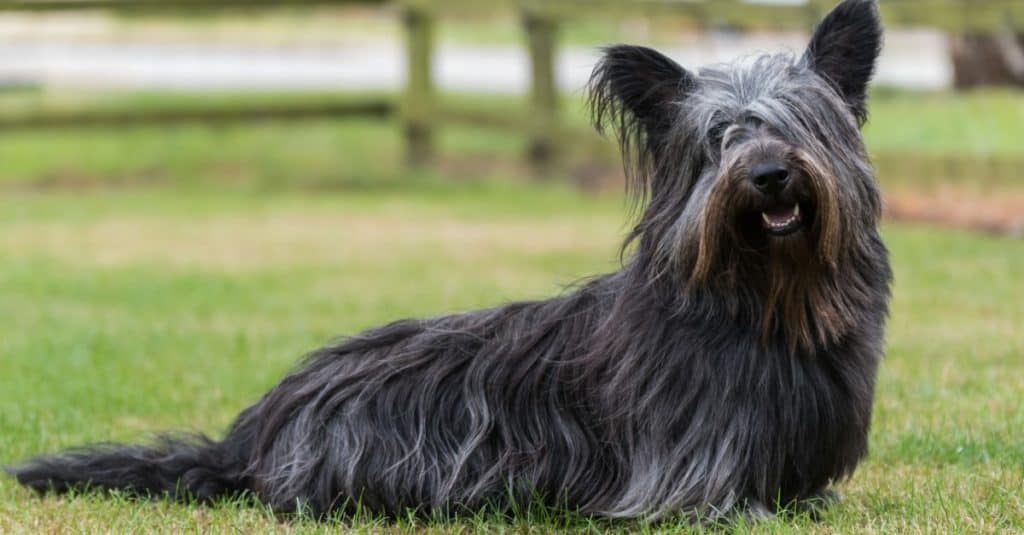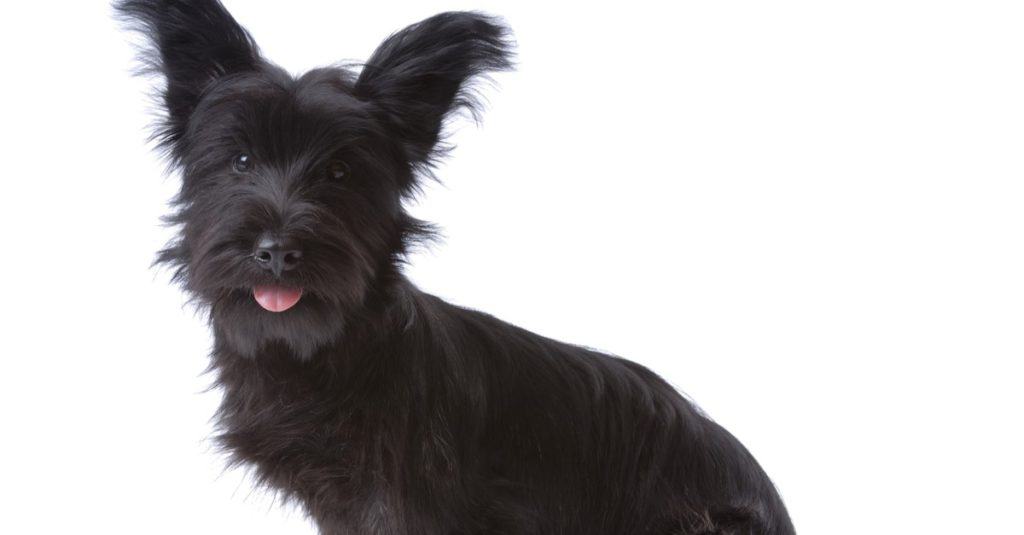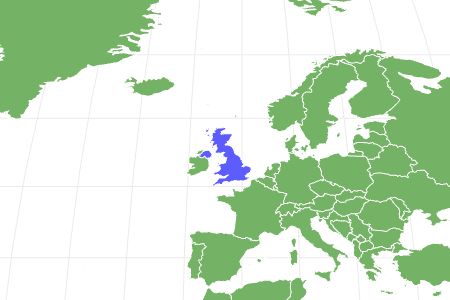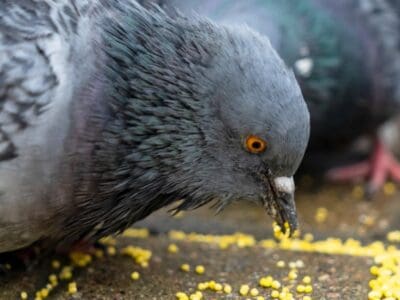Skye Terrier
Canis lupus
Skye terriers are the oldest terrier breed, dating back at least 400 years.
Advertisement
Skye Terrier Scientific Classification
- Kingdom
- Animalia
- Phylum
- Chordata
- Class
- Mammalia
- Order
- Carnivora
- Family
- Canidae
- Genus
- Canis
- Scientific Name
- Canis lupus
Read our Complete Guide to Classification of Animals.
Skye Terrier Conservation Status
Skye Terrier Facts
- Fun Fact
- Skye terriers are the oldest terrier breed, dating back at least 400 years.
- Temperament
- Intelligent, Gay, Friendly, Fearless, Loyal, Good-tempered
- Diet
- Omnivore
Skye Terrier as a Pet:
- General Health
- Energy Level
- Shedability
- Trainability
- Intelligence
- Tendency to Chew
- Size
- Family and kid friendliness
- Yappiness / Barking
- High
- Separation Anxiety
- Moderate
- Preferred Temperature
- Cold climate
- Exercise Needs
- Low
- Friendly With Other Dogs
- Poor
- Pure bred cost to own
- $2,000-$3,000
- Dog group
- Terrier
- Male weight
- 35-40 lbs
- Female weight
- 25-30 lbs
This post may contain affiliate links to our partners like Chewy, Amazon, and others. Purchasing through these helps us further the A-Z Animals mission to educate about the world's species.
View all of the Skye Terrier images!
Skye terriers are the oldest terrier breed, dating back at least 400 years.
Skye terriers are as well-known for their stubborn but intensely loyal personalities as they for their distinctive double coat and low-to-the-ground appearance. Originally bred as vermin-hunting dogs by farmers in the remote Hebrides Islands, these medium-sized dogs quickly became favorites with the British upper classes. Mary Queen of Scots smuggled her Skye terrier into the Tower of London beneath her petticoat, and the faithful dog went on to accompany her to her execution.
See all of our expert product reviews.
Skye terriers have a straight-haired, somewhat bristly top coat above a short, wooly undercoat. They are not hypoallergenic: they shed a moderate amount. Their coats can be blond, fawn, silver, blue, dark or light grey, or black. The Skye’s most distinctive features are its relatively short legs and long torso along with the long, feathery hair that forms a veil over its forehead and eyes. In the breed’s early days, this veil of hair formed a protective barrier against brush and briars. Skies adapt very well to indoor life because they only need a moderate amount of exercise.
3 pros and cons of owning Skye Terriers
| Pros! | Cons! |
|---|---|
| They’re devoted: To those upon whom they choose to bestow their affection, Skye terriers are adoring and eager to please. They can be standoffish to the rest of the world, however. | They’re headstrong: Skyes top the charts when it comes to that infamous terrier stubbornness trait. They require firm, consistent training from an early age to dissuade them from the notion that they’re the alpha in the house. |
| They’re unique-looking: No other dog looks quite like the Skye terrier. Try to imagine what the offspring of a corgi and a bearded collie might look like, and you’ll get a general idea. | They’re scrappy: The Skye terrier was originally bred to hunt badger, otter and fox, and they’ve retained their aggressive instincts. They’re not shy about picking fights with other dogs of the same sex. They’re not a good dog to own if your other pets include cats, rabbits or hamsters, either, because these dogs like to chase. |
| They’re great watchdogs: Skye terriers are highly protective of those they love and instinctually wary of strangers. They’re courageous, and their defensive reactions are strong. These qualities make them excellent guard dogs. | They’re hard to find: It’s been estimated that only 3,000 to 4,000 Skye terriers exist in the world, which puts these dogs right up there on the endangered animals list along with pandas and tigers. Puppies can be extremely hard to track down, and the price commanded by those puppies is typically high. |

©Lourdes Photography/Shutterstock.com
Skye Terrier Size and Weight
Skye terriers have short legs, so they seldom stand more than 9 or 10 inches high. Males are slightly taller than females. Though they’re only of medium size, they’re muscular dogs with powerful heads, deep chests, and well-developed hindquarters, and male Skyes typically weigh 35 to 40 pounds. Female Skies weigh significantly less with a weight range between 25 and 30 pounds.
| Height (Male) | 10’’ Tall |
| Height (Female) | 9.5” Tall |
| Weight (male) | 35-40 lbs, fully grown |
| Weight (female) | 25-31 lbs, fully grown |
Skye Terrier Common Health Issues
A healthy Skye terrier has a lifespan between 12 and 14 years. Puppies may be prone to achondroplasia or premature closure of the distal radius; for that reason, it’s advisable to exercise these dogs sparingly for the first eight months of their lives as too much running or jumping may actually impede bone growth and leave them with a limp or bowed legs.
Like other dogs with short legs and heavy trunks, Skye terriers have a tendency to develop degenerative disc disease. Other maladies Skies are prone to include glaucoma, lens luxation, and hypothyroidism. Female Skies also have a significantly high incidence of mammary cancer.
Health and Entertainment for your Skye Terrier
See all of our expert product reviews.
- Achondroplasia
- Degenerative disc disease
- Glaucoma
- Mammary cancer
Sky Terrier Temperament
Skye terriers are typical terriers, which is to say that they’re proud, tenacious, and fiercely devoted to those they love. Skies develop intense loyalties; while they will be affectionate with all members of their human families, they typically develop an intense one-on-one relationship with a single owner.
Skyes have minds of their own, but you can offset willful behavior with early training that’s loving but firm and consistent. They’re suspicious of strangers, and they’re not shy about barking; these personality traits make them excellent watchdogs.
How To Take Care of a Skye Terrier
If you decide to welcome a Skye terrier into your life, you’re going to have to weigh a number of factors including your new dog’s unique dietary essentials, grooming needs, and training requirements. Skyes’ long, flowing coats and irascible temperaments mean special care must be taken with grooming and training.
The Best Dog Food for Skye Terriers
Although highly active in their native habitats, most Skye terriers adopted as companion animals don’t get enough exercise to warrant more than two cups of high-quality dog food a day, divided into two meals.
Skye terrier puppies between three and six months of age should be fed three meals a day. At the age of six months, cut out one of these feeding times.
While it’s true that Skies respond best to positive reinforcement as a training method, and positive reinforcement means treats, try to use these sparingly. Overfeeding can lead to obesity, which can exacerbate tendencies to degenerative disc disease.
At A-Z Animals, our favorite for the best dog food for Skye Terriers is Wellness CORE RawRev Wholesome Grains Small Breed Original Recipe.
The chicken and turkey ingredients in this balanced dog food provide adequate levels of glucosamine to fortify the joints. The ideal balance of calcium and phosphorus are key to the development at the maintenance of sturdy bones and cartilage too, while taurine and carrots serve to support eye health.
Check Chewy and Amazon for this product
- Nutrient packed kibble plus100% raw freeze-dried turkey pieces
- Contains glucosamine for strong joints, probiotics for digestive health, omega fatty acids for healthy skin and coat, and taurine for a healthy heart
- No legumes, potatoes, fillers, or artificial flavors
Skye Terrier Maintenance And Grooming
Your Skye’s grooming needs will depend upon how much time he or she spends outdoors. If your Skye spends a lot of time outside in your yard digging and chasing, then daily combing is a must. Use a metal comb with long teeth that can get to the roots of your pet’s double coat, and be on the lookout for fleas, ticks, tangles, and mats. If your Skye mostly hangs out on your couch, then weekly combing may be all you need. Keep in mind, though, that Skye terriers are not hypoallergenic. They shed a moderate amount, and the more often you brush them, the less hair will get on your furniture, rugs, and carpets.
Skyes don’t need to be bathed more than once every couple of weeks. Lathering the shampoo is sometimes difficult because of the unusual stiffness of the hairs in a Skye’s outer coat, so you may need a specially formulated product. Don’t forget the conditioner. Brush your dog’s teeth every day, and trim his or her nails as needed.
Skye Terrier Training
Skye terriers have a stubborn, naturally anti-authoritarian temperament, so you can expect training to present a challenge. Because of how hard it can be to train these dogs, Skies are not a good choice for first-time dog owners.
Skies are smart dogs and can be trained to participate in canine sports like agility and tracking, but only after you make it clear to them that you’re the boss. They do not respond well to harsh discipline; in fact, if you try it, they are likely to hold a grudge. They do best with gentle, consistent training. Start as early as possible. Socialization is also critical with this breed; otherwise, they may become aggressive with animals and people they do not know.
Skye Terrier Exercise
Curiously, given their past as hunting dogs, Skye terriers don’t require much exercise. Two fifteen-minute walks a day will be enough to keep your dog happy. Of course, if you want to walk for longer periods of time or more often, that’s fine, too. Skyes are playful, so even if your Skye spends most of his or her time inside, you will need to invest in an ample supply of dog toys and schedule gaming sessions. The Skye terrier makes a great apartment dog.
Skye Terrier Puppies
Skye terrier puppies can be difficult to find. In the UK where the breed is far better known, fewer than 50 Skye terrier puppies were born in 2013, which puts this dog on the canine endangered species list. Expect to pay a high price for your Skye terrier pup. If your heart is set on a Skye to call your own, you may have better luck adopting an adult dog from a rescue group.

©Toloubaev Stanislav/Shutterstock.com
Skye Terriers and Children
Skye terriers are not appropriate pets for families with children younger than 10. A Skye is a feisty dog who may snap at the toddler who pulls affectionately on his tail or growl at the six-year-old who tries to retrieve a rubber ball from her grasp. They’re fine with older children so long as their training includes proper socialization. You’ll want to dissuade children your Skye terrier doesn’t know from petting your dog when the two of you are out on walks, though.
Dogs similar to Skye Terriers
Welsh corgis, Russell terriers and Scottish terriers share similarities with the Skye terrier.
- Welsh Corgi – Like the Skye terrier, the Corgi is a compact dog with a body that’s close to the ground. Corgis were bred to be herding dogs, however, so they’re far more tractable and indiscriminate in their affections than Skyes are.
- Russell terriers – Like Skye terriers, Russell terriers were bred to hunt down foxes. Russells are just as independent-minded and stubborn as Skies, but they’re considerably more hyper.
- Scottish terriers – They have a lot in common with Skye terriers, both in appearance and temperament. Scottish terriers hail from the Scottish highlands, and it’s quite possible the breed may have some Skye terrier forbears.
Famous Skye Terrier
Scotland’s most famous dog is a Skye terrier. In 1858, after Edinburgh nightwatchman John Grey died and was buried in Greyfriars Kirkyard, his Skye terrier, Bobby, sat on his master’s grave for 14 years. Bobby was immortalized in a drinking fountain topped by his own sculpted likeness, which has become one of Edinburgh’s most famous tourist attractions. The faithful Skye terrier has also been immortalized in several books and films.
Popular Names for Skye Terriers
- Bobby
- Alisdair
- Dougall
- Bonnie
- Torey
Skye Terrier FAQs (Frequently Asked Questions)
How much does a Skye terrier cost to own?
If you can find a Skye terrier puppy, the price of that puppy is likely to be $2,000 to $3,000. You’re likely to spend another $500 to $750 on vet visits and supplies like food bowls, crates, leashes, bedding, and toys. Thereafter, you can anticipate spending $1,500 to $2,000 a year on incidental, dog-related expenses.
Are Skye Terriers good with kids?
Skye terriers should be kept away from children much younger than 10.
How long do Skye terriers live?
The average Skye terrier lifespan is 12 to 14 years.
What is a Skye Terrier?
Skye terriers are medium-sized hunting dogs that hail from the far northern Island of Skye in the Hebrides.
Do Skye Terriers shed?
Yes, Skye terriers shed a moderate amount. They are not hypoallergenic.
How much does a Skye terrier cost?
The price you’ll pay for a Skye terrier puppy ranges between $2,00 and $3,000.
Do Skye terriers make good pets?
Skye terriers make good pets so long as you train them to obey your commands.
How big do Skye Terriers get?
Skye terriers typically reach a height of 9 to 10 inches and a weight of 30 to 40 pounds.
Thank you for reading! Have some feedback for us? Contact the AZ Animals editorial team.
Sources
- American Kennel Club, Available here: https://www.akc.org/dog-breeds/skye-terrier/
- Petland, Available here: https://www.petlandcicero.com/breed/skye-terrier/
- Dogtime, Available here: https://dogtime.com/dog-breeds/skye-terrier#/slide/1
- Roca Dog, Available here: https://www.rocadog.com/dog-blog-articles/skye-terrier-top-10-interesting-facts
- Your Pure Bred Puppy, Available here: https://www.yourpurebredpuppy.com/reviews/skyeterriers.html
- Hill's Pet, Available here: https://www.hillspet.com/dog-care/dog-breeds/skye-terrier
- Paw Culture, Available here: https://www.pawculture.com/breed-basics/dog-breeds/skye-terrier-dog-breed/
- Vet Street, Available here: http://www.vetstreet.com/dogs/skye-terrier#personality
- Vet Info, Available here: https://www.vetinfo.com/choosing-the-best-skye-terrier-dog-food.html



















